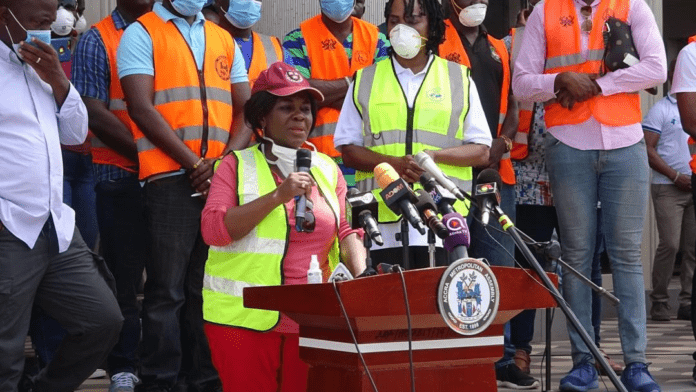Sanitation and Water Resources Minister-designate, Cecilia Abena Dapaah, has said the government is on course in making the national capital, Accra, the cleanest city in Africa
Currently, she said the government had not achieved the target, noting that it required an all-inclusive approach from everybody to make it a reality.
The Akufo-Addo-led government during its first term in 2017 promised to make Accra the cleanest city in Africa by the end of 2020.
Responding to questions from members of the Parliament’s Appointments Committee in Accra, during her vetting on Tuesday, Madam Abena Dapaah said through the Greater Accra Metropolitan Area Integrated Initiative, a World Bank project, her Ministry received $43 million out of the $200 million support to cart garbage and desilt Odaw River.
It had also undertaken many interventions including supply of household waste bins, provision of 33,000 household toilets, and evacuation of waste to refuse dump sites, among others.
She said it was true that the President made the bold promise, but required everybody and all stakeholders’ support to accomplish it.
However, she said, the various assemblies had a challenge with sanitation issues, especially the evacuation of waste materials, and if given the nod, she would collaborate with the assemblies to deal with the menace.
She noted that waste was ‘wealth’ and gave the Ministry’s commitment to collaborate with the assemblies to recycle plastic waste and enforce the sanitation bye-laws.
“Sanitation simply means cleanliness and personal hygiene and it starts from the individual level, treatment of faecal matters, MMDAs coming in with their interventions, while the central government provides interventions because sanitation gives us dignity as a people,” Madam Dapaah noted.
She said her Ministry would provide one million household toilets through the government’s special initiatives towards solving the open defecation menace.
On rural and urban water coverage, the Minister-designate said there was 62.52 per cent rural coverage and 93 per cent urban coverage.

